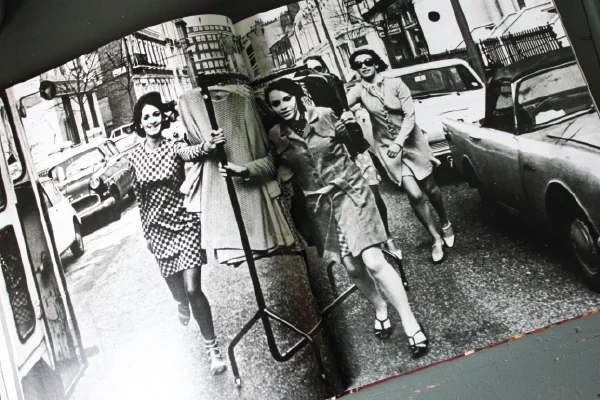Book: The Biba Years 1963-1975
Biba is an institution at Betty HQ. We talk about it and it’s founder Barbara Hulanicki more often than we would care to admit. From the beautifully designed clothes to the iconic interiors of the shops, this obsession runs deep. Come on now can you blame us? Excitement levels hit an all time high when we got our hands on the latest publication dedicated to this cult brand. Entitled The Biba Years: 1963-1975 this book takes us into the wonderful world of Biba. You’ll be happy you stopped by because today we are going to give you a sneak peek inside. Are you ready?
1974 saw the opening of Big Biba – a 7 storey building which attracted more than 1 million customers weekly. At the time it was one of the most visited tourist attractions in London. Though the clothes were highly sought after, the interiors played a huge part too. Art deco in style and reminiscent of the Hollywood golden era Big Biba was labelled ‘the most beautiful store in the world’, and it really was. The food hall consisted of some rather interesting displays – think giant baked bean can with shelves that stocked only baked beans. This building also housed the infamous Rainbow Room, a regular haunt of big name rock stars. On top was a roof garden complete with flamingos. Yes, you read that correctly, flamingos. The world of Biba was fabulous to say the least.
Founded in 1963 by designer Barbara Hulanicki, Biba was born from humble beginnings starting off as a mail order service for affordable fashions. The first store opened in 1964 and was a huge success. It is said that Biba revolutionised the British high street and was the first retailer to make fashion affordable for the young consumers of the 60s and 70s. This was a time when celebrity culture was just starting to gather speed and for the first time young people were able to dress the way they wanted, rather than like their parents. It is not surprising then that part of the attraction was that girls could see an outfit on TV on a Friday night which could then be bought in the shop on the Saturday and worn that evening. Reportedly on one morning there were over 4,000 orders for a particular pink gingham dress that looked just like one Brigitte Bardot had worn. It wasn’t long before a second store opened in Kensington in 1965. Maintaining their roots, several mail order catalogues were available in 1968. This meant that those living outside London could still achieve the ‘Biba look’. And so the brand reached well beyond the W8 postcodes of its shops.
We can’t recommend this book highly enough. On these pages you will find photos of some of the first ensembles and styles that created the ‘Biba look’ as well as a look into the iconic shops, previously unpublished material and some new illustrations by Barbara done especially for this publication. Biba is a brand that quickly achieved cult status and maintains so today. The clothes are iconic, the style legendary. This is not just a label – this is a phenomenon. We would love nothing more than to have a wardrobe full of Biba but for now we will have to settle for having it on our bookshelves.
We can’t recommend this book highly enough. On these pages you will find photos of some of the first ensembles and styles that created the ‘Biba look’ as well as a look into the iconic shops, previously unpublished material and some new illustrations by Barbara done especially for this publication. Biba is a brand that quickly achieved cult status and maintains so today. The clothes are iconic, the style legendary. This is not just a label – this is a phenomenon. We would love nothing more than to have a wardrobe full of Biba but for now we will have to settle for having it on our bookshelves.








